Content from the Brookings Doha Center is now archived. In September 2021, after 14 years of impactful partnership, Brookings and the Brookings Doha Center announced that they were ending their affiliation. The Brookings Doha Center is now the Middle East Council on Global Affairs, a separate public policy institution based in Qatar.
Muqtada al-Sadr has long been something of an enigma. Over the past several weeks, the firebrand Shiite cleric, who heads Iraq’s most powerful socio-political movement, has been warmly welcomed in the region’s leading Gulf states, which have largely shunned Iraq’s Shiite majority and then returned to Iraq to mobilize opposition against corruption, stagnation, and authoritarianism within the Shiite-led government in Baghdad.
Due to his unparalleled capacity to mobilize the masses, his father’s legacy, and growing discontent in Iraq, al-Sadr may indeed be the best hope the country has of reducing Iran’s influence in Iraq and enhancing government accountability in the foreseeable future. But it will not be without its challenges.
Al-Sadr’s enigmatic role
Al-Sadr came to prominence in the aftermath of the 2003 U.S.-led invasion of Iraq as a fierce opponent of the American occupation. During this period, his organization’s militia wing, known then as the Mahdi Army, engaged in a guerilla campaign against U.S. troops as well as, on occasion, his domestic rivals. He also deployed the vast Sadrist network that his father established in the 1990s to fill the vacuum left by the collapse of the state, providing protection and social services to the destitute Shiite underclass.
Today, al-Sadr has positioned himself as a counterweight against Iranian influence in Iraq and a champion of reform, but his organization bears responsibility for much of Iraq’s troubles. The Mahdi Army played a central role in fueling Iraq’s devastating sectarian conflict, fought U.S.-led coalition and Iraqi forces, and engaged in criminal activities. Early on, al-Sadr benefitted from Iranian support and he later spent three years in self-imposed exile there, burnishing his religious credentials.
While I was on a recent research visit to Baghdad, a representative of the Sadrist movement explained that the Mahdi Army’s early strategy was a product of the breakdown of the state and the turmoil that followed the U.S. invasion. Indeed, in addition to combating Arab Sunni insurgent groups, the Mahdi Army has also had to outflank its rivals within the Shiite political class, including the Islamic Supreme Council of Iraq (ISCI) and the Badr Brigade (the former armed wing of ISCI that has since splintered from the organization), as well as the Islamic Dawa Party.
Al-Sadr’s Mahdi Army helped spawn an array of Iran-aligned militias that have recently won widespread acclaim in countering the so-called Islamic State. These groups now spearhead the powerful Popular Mobilization Force (Hashd al-Shaabi), which has been institutionalized into the Iraqi state and functions parallel to a much weaker Iraqi military. These militias have secured Iran unparalleled influence in Iraq.
Al-Sadr himself returned to Iraq in 2011 as a more refined, media-savvy operator—no doubt as a result of training and support he received while in Iran. A year before his return to Iraq, the Sadrists won nearly 40 seats in the 2010 parliamentary elections and acquired seven ministries, the deputy-speaker of parliament post, as well as a collection of governorships in the south of the country. By 2011, the Mahdi Army was also refashioned into a social services organization, an effort by al-Sadr to repair its tarnished reputation, which had resulted from its involvement in the civil war, sectarian atrocities, and criminal conduct. The organization, however, retained the ability to function as a militia and mobilize thousands of men into armed conflict if necessary.
What makes al-Sadr different
Two advantages distinguish al-Sadr from his rivals: the legacy of his father, Mohammad Mohammad Sadeq al-Sadr, and the mobilizing capacity of the Sadrist movement. These factors may enable him to forestall Iran’s creeping domination of Iraq and propel Iraq’s political class toward reform.
While his militia rivals are renowned for their battlefield success against ISIS, Muqtada has emerged as the voice of Iraq’s largest demographic, its Shiite underclass—much like his father. The senior al-Sadr established a powerful social base during the 1990s, when Iraq’s Shiites suffered from repression by the Baath regime and United Nations sanctions. His message of defiance against Saddam Hussein led to al-Sadr’s 1999 assassination and his subsequent elevation as a symbol of Shiite resistance.
That legacy of legitimacy underpins the Sadrist network and its resistance to Iranian interference in Iraq’s affairs, save for the brief period of self-imposed exile for the cleric. As a result of its autonomy and ability to self-sustain through its dominance of the so-called informal economy, control of or influence within government ministries since 2003 (which have allowed the organization to use state resources as a form of patronage), and criminal activities, the movement has emerged as something of an exception in a country where clerics, politicians, and militias are widely perceived as clients of regional powers such as Iran, Saudi Arabia, and other Gulf states. During my interviews, officials in Baghdad described the Peace Brigade as the “rebellious militias” because of their rejection of Iranian interference as well as their refusal to submit to Iraqi state control. Combined with the vast, grassroots network the organization enjoys and its ability to mobilize tens of thousands, if not hundreds of thousands—in addition to the legacy of Sadeq al-Sadr and the movement’s longstanding hostility to Iranian interference—these could be harnessed to both reduce the space in which Iran and its allies can operate, as well as even force the political class to take the matter of reform more seriously.
Shaking up Iraqi politics
The extent to which al-Sadr will emerge as Iraq’s best hope of forestalling Iran’s ascendancy and reducing the space in which Iran-aligned factions and groups function will depend on whether Grand Ayatollah Ali al-Sistani continues to resist calls for him to play a greater role in politics and governance in Iraq. Al-Sadr has long aimed to compete with Sistani for power and influence, in the way his father did in the 1990s. During this period, the senior al-Sadr attacked Sistani and the power and privilege of what he called the “elitist” religious establishment (or marja’iyya), a disconnect that also shaped the Sadrist movement’s relations with the exiled Shiite opposition that now dominates the Iraqi government.
Al-Sadr has not yet acquired the religious and scholarly credentials that could allow him to compete with Sistani (the leading Grand Ayatollah) but he may not need to once Sistani passes. Traditionally, succession has taken anything from months to years and is shaped by a collective decisionmaking process that involves the most senior of members within the Najafi clerical establishment, in addition to the input and influence of Sistani’s own network of international representatives and institutions.
However, after Sistani, there may no longer be a predominant and preeminent wielder of religious authority. The political and clerical environment is today far more atomized than it once was. Weakened institutions and the multiple, rival centers of power that have emerged within the Shiite community over the past decade could have a far-reaching impact on the politics of authority in Najaf. For al-Sadr, that could provide an opportunity to fill the gap that Sistani’s passing will likely bring, while also challenging Iran-aligned groups within Najaf and elsewhere to ensure Najaf’s historical resistance to the wilayati-faqih doctrine that underpins Iran’s system of Islamic rule.
For now, al-Sadr’s current assertiveness should be seen as a reaction to the ascendancy of his rivals and the coming elections in Iraq, where the competition for power has been intensified by the emergence of battle-hardened, popular militia groups with influential sponsors in Baghdad and the region. Al-Sadr’s recent trips to the Gulf could be part of a long-term strategy that aims to diversify the movement’s alignments in the region, but also domestically in Iraq where it may seek to attract votes and supporters beyond its usual support base. While this may be some time away, given the movement’s past, al-Sadr will emerge from these engagements as an ambitious, proactive player that could give the political system in Iraq with a much-needed shake-up.
In the long run, al-Sadr and his organization are ill-equipped to engage in the business of governance; they lack the capacity to translate mobilization into public policy and ultimately are part of the problems that plague Iraq. Through the sheer pressure of mobilizing the masses, the Sadrist movement could, nevertheless, engineer the space that allows for a culture of accountability to emerge, which Iraq’s reformist actors could then capitalize on, with the necessary support from the region and the international community.
Indeed, al-Sadr will have to muster the necessary support from Iraq’s reformists, including a civil society that has played an important role in galvanizing people onto the streets. It also requires working with Western-aligned actors like Prime Minister Abadi, who in response to Sadrist protests has attacked al-Sadr and challenged his reform rhetoric on the basis that his own cronies and supporters are responsible for corruption and instability. This will be crucial to ensure the Sadrists’ demands are not dismissed as disingenuous and a power-grab by the cleric, while also preventing another intra-Shiite conflict.
Could and should the United States engage the Sadrists in a similar fashion to its Gulf allies? That moment should be some way away: Right now, it would only embolden America’s enemies in Iraq and the region and would be strongly rejected by the Sadrists. However, while the Sadrist movement has a violent history with the United States it is, nevertheless, receptive to engaging with others in the West. The Sadrists have the potential to be a counterweight to Iran-aligned actors, but lack strategic nous and good governance capabilities. More broadly, at some point the United States and the international community will have to make some hard decisions about a group that could be edging closer toward accepting international norms and basic human rights and that could be leveraged to resist malevolent actors attempting to shape the future of Iraq and the region.
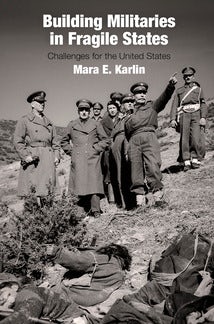

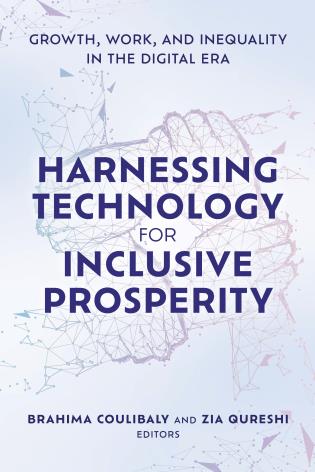
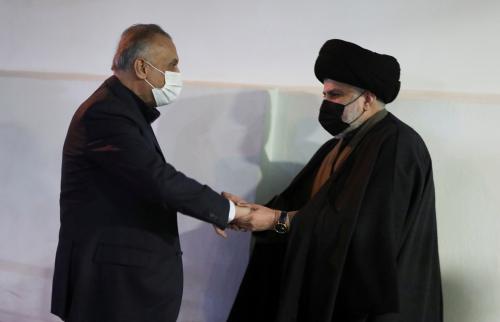
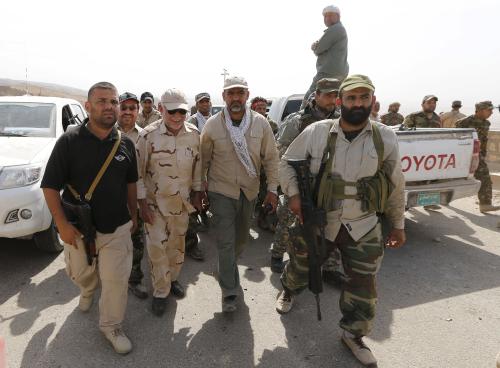
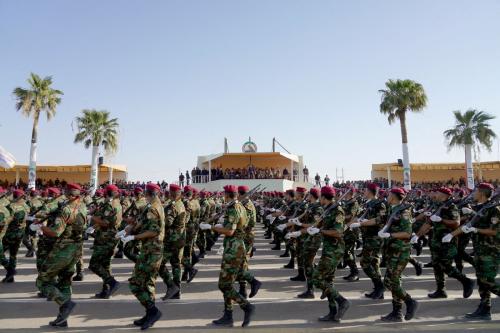

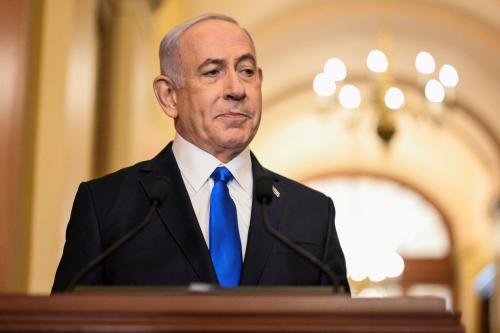
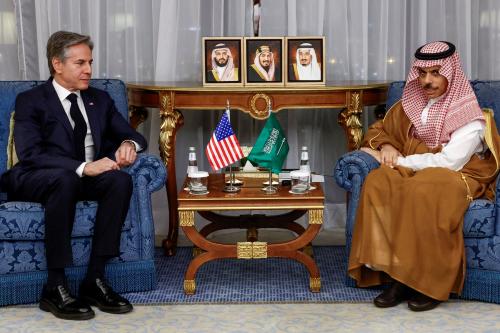
Commentary
Could Muqtada al-Sadr be the best hope for Iraq and the region?
August 21, 2017